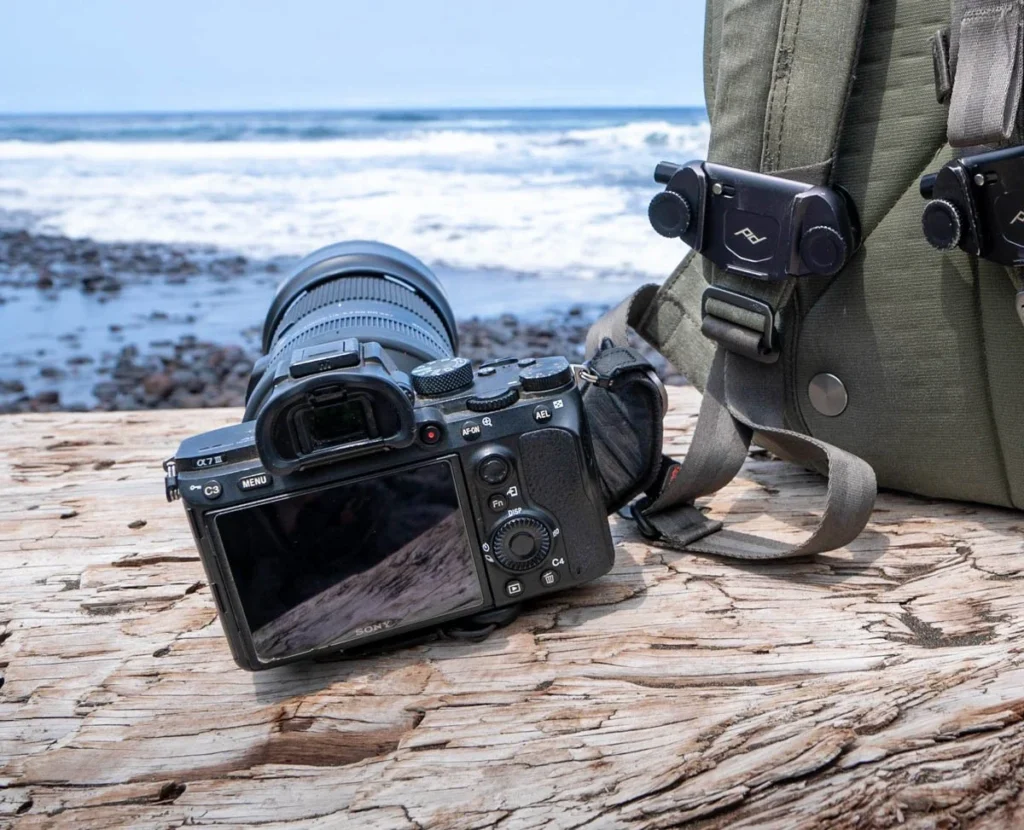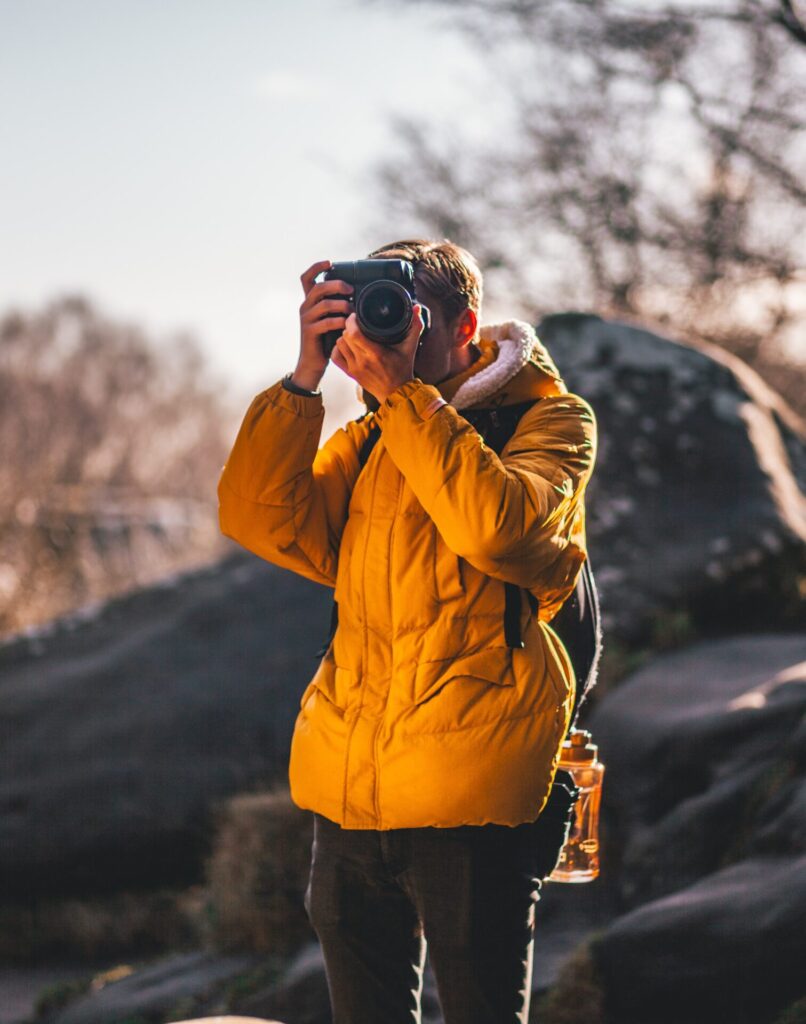Best Sony a7 III 2024 review camera

Table of Contents
The Sony a7 III is a full-frame mirrorless camera that has garnered widespread acclaim for its exceptional blend of performance, versatility, and value.
As part of Sony’s esteemed Alpha series, the a7 III stands out with its 24.2-megapixel Exmor R CMOS sensor, offering remarkable image quality and dynamic range.
Its advanced BIONZ X image processor ensures swift and accurate autofocus, capable of tracking fast-moving subjects with ease.
The camera’s impressive ISO range and 5-axis in-body image stabilization make it adept at handling a variety of lighting conditions, from bright sunlight to dimly lit environments.
Additionally, the a7 III’s robust 4K video capabilities, durable build, and ergonomic design cater to both photographers and videographers, making it a highly versatile tool for professionals and enthusiasts alike.
Whether you’re capturing stunning stills or cinematic videos, the Sony a7 III is designed to elevate your creative endeavors to new heights.

Sony didn’t waste any time in bringing the body design of the high-resolution, professional-grade a7R III to a more budget-friendly model.
However, despite its approachable price tag of $1,999.99 (body only), the a7 III is far from being a basic entry-level camera. Its BSI CMOS sensor delivers outstanding performance in all lighting conditions and boasts exceptional dynamic range.
Capable of shooting at 10 frames per second, the a7 III features an autofocus system that nearly covers the entire image sensor.
This camera also excels in video production, offering smooth and sharp 4K footage, as well as slow-motion recording at 1080p.
It outperforms competitors in its price range, earning it our Editors’ Choice for entry-level full-frame cameras.
(Note: This review has been updated to include the enhancements brought by Firmware 3.0 for the a7 III.)
Design
The a7 III shares a similar feel with its predecessors, the a7 II and a7R III. Measuring 3.9 by 5.0 by 2.5 inches (HWD) without a lens and weighing approximately 1.4 pounds, it features the same grip and body design as the a7R III.
The camera is comfortable to hold, even when paired with a larger zoom lens like the FE 100-400mm. Additionally, the body, along with all Sony FE lenses, is designed to be dust and splash-resistant.

Sony provides the a7 III not only as a body-only option but also in a $2,199.99 kit that includes the FE 28-70mm F3.5-5.6 lens.
The 28-70mm lens is among the earliest in the FE series. While it’s functional, a bundle featuring the newer and more versatile FE 24-105mm F4 lens would be preferable.
However, considering that the 24-105mm lens alone costs $1,300, the overall price of such a kit might be prohibitive for many potential buyers.
Handling the a7 III is quite similar to the a7 II. The top plate still features the EV dial, programmable C1 and C2 buttons, and a Mode dial, although it’s not a locking dial like the one on the a7R III.
The shutter release button is positioned on top of the handgrip, slightly lower than the rest of the top plate, and angled for easy access.
Surrounding the shutter button is the On/Off switch. The handgrip also includes a command dial, which can be operated with your right index finger.
There’s a rear command dial offset slightly from the EV dial, easily accessible with your right thumb.

The rear controls of the a7 III mirror those of the a7R III and a9. Positioned above the rear LCD, to the left of the EVF eyecup, are the programmable C3 button and the Menu button.
To the right, along the top, you’ll find the Record, AF-ON, and AEL buttons. Just below these, situated between the rear thumb rest and the LCD, are the focus point selector joystick and the Fn button.
Next in line is the flat rear command dial, which features a central button and directional presses for adjusting Display, ISO, and Drive mode.
Unlike the a9, the a7 series doesn’t include a dedicated Drive dial. The command dial on the a7 III is designed with deep ridges for comfortable turning and offers a more satisfying tactile experience compared to the a7 II.
It provides more resistance and is physically larger, making button presses more responsive and easier to feel.

Completing the rear controls are the Play and Delete buttons. The Delete button also serves as the programmable C4 button when in shooting mode, with its default function toggling the touch sensitivity of the rear display.
The touch capabilities are somewhat limited—you can’t navigate menus via touch, but you can tap the screen to set a focus point.
Tapping a spot will override the wide area focus setting and switch to a flexible spot, which can then be adjusted using touch or the joystick.
To revert to the wide area focus, you use the button at the center of the rear command dial. This method of focus adjustment is available in both still and video modes.

The camera also enables focus adjustment using the LCD while composing shots through the EVF. By sliding your finger on the display, you can move the focus area, overriding the wide area setting in the same manner as when using the rear LCD for framing.
Regarding the menus, Sony has faced criticism for its extensive and complex menu system. The a7 III offers some tools to alleviate the frustration of navigating through numerous pages of options.
The “My Menu” feature is fully customizable, allowing you to add frequently used settings for quick access. While this is a positive step, further organization and categorization of menu options would be beneficial.
The menu organizes camera capture settings into two main tabs, each with multiple pages. However, it mixes settings for both movies and stills, with a few dedicated pages for video capture inserted in the middle. Cleaner organization could make finding the desired setting more straightforward.

The screen tilts up and down, but it lacks the ability to swing out from the body to face forward like a true vari-angle display.
This limitation is unfortunate for vloggers, as it restricts their ability to set up shots and record video while monitoring the framing.
This is particularly disappointing given the a7 III’s strong video capabilities. When reviewing images, there are some touch controls available; you can swipe around a magnified photo with your finger during playback, providing an intuitive way to inspect your shots.

The EVF in the a7 III is the same 0.78x magnification OLED with 2,359k dots found in the a7 II. While the higher-end models in the series, the a7R III and a9, offer the same magnification, they feature a higher resolution with 3,686k dots.
When I first used the a7 III, I didn’t notice the lower resolution—the EVF provides a clear view and allows me to accurately determine if a subject is in focus.
However, if you frequently use the more expensive models, you might appreciate the enhanced detail provided by the higher-resolution EVFs.
Power and Connectivity
The a7 III adopts the Z battery, initially introduced in the a9 and also utilized by the a7R III. It boasts a commendable battery life of 710 shots per CIPA ratings with the a7 III, surpassing the power requirements of the a9 and a7R III, both rated for 650 images per charge.
This larger battery capacity proves advantageous for both enthusiasts and professionals who prefer not to carry numerous spares. Additionally, an optional grip is available, enabling the camera to accommodate two batteries simultaneously, effectively doubling its lifespan.
With this setup, concerns about running out of power during extended shooting sessions, such as weddings, are alleviated.

Sony opts not to include an external charger with the a7 III. If you prefer charging the battery outside the camera, you’ll need to purchase one separately.
However, the camera offers the convenience of recharging via USB using the included USB-to-AC adapter. For travelers and professionals, especially those with multiple Z batteries to recharge after a day of shooting, investing in a wall charger is advisable.
In terms of connectivity, the camera features two USB ports (one USB-C and one micro USB), along with micro HDMI, a 3.5mm microphone input, and a 3.5mm headphone jack.
Unlike the a7R III and a9, it does not include a PC Sync flash socket. However, it does come equipped with a standard hot shoe, featuring additional electrical contacts for accessories such as Sony’s XLR audio adapter.

The a7 III comes equipped with two memory card slots. The first slot, positioned toward the bottom of the camera, supports SD, SDHC, and SDXC memory cards at UHS-II speeds. Meanwhile, slot 2, located above it, is compatible with all SD formats at slower UHS-I speeds and also supports Sony Memory Stick media.
Similar to my previous reviews of the a9 and a7R III, I maintain my critique of supporting only UHS-II in one slot—ideally, both slots should accommodate the latest, fastest memory format.
The relevance of Memory Stick media seems questionable in today’s market, and it’s doubtful that anyone beyond Sony’s circle would prioritize it.
In addition to wired connectivity options, the a7 III features Bluetooth, NFC, and Wi-Fi capabilities. These functionalities enable seamless connection to Android or iOS devices via the free Sony PlayMemories Mobile app.
With this app, users can effortlessly transfer images and videos to their smartphones for instant social sharing. Furthermore, the app allows for convenient use of your phone as a wireless remote control for the camera.
Performance and Autofocus
The a7 III powers on, focuses, and captures an image in approximately 2.2 seconds. In this aspect, it lags behind competing SLRs such as the Canon EOS 6D Mark II (0.4-second) and Nikon D750 (0.4-second). However, its autofocus system is impressively swift, achieving focus lock in just 0.05 seconds under bright lighting conditions and an average of 0.4 seconds in very dim environments.

Using a Lexar 300MBps memory card in the UHS-II slot, I conducted tests to determine the burst speed of the camera. In its fastest burst mode, the camera achieves 10 frames per second (fps).
However, the number of shots you can take before the camera experiences a slowdown varies depending on the file format used.
For Uncompressed Raw and Extra Fine JPG, I managed to capture 34 shots. With Compressed Raw and Extra Fine JPG, the count increased to 78 shots. Shooting in Uncompressed Raw alone yielded 37 shots, while Compressed Raw allowed for 103 shots. The highest count came with Extra Fine JPG, allowing for 164 shots.
The recovery time, which is the duration required for the buffer to fully clear to the memory card, also varies according to the file format.
Expect to wait approximately 24 seconds when shooting Raw+JPG (either format), but only about 14 seconds for Raw files alone. Due to the ability to capture a larger number of JPG images at once, the write time to clear them to the card extends to about 54 seconds.

The autofocus system in the a7 III shares similarities with the high-end a9, although it lacks the same level of uncanny intelligence.
The sensor design of the a9 enables instant readout and 20fps capture, giving it a performance edge over the a7 III despite both cameras having the same number of focus points and coverage area.
Nonetheless, the a7 III’s autofocus system is commendable. It boasts a total of 693 phase detection points, covering 93 percent of the sensor area, excluding only its extreme edges.
These phase detection points are complemented by 425 contrast points, which are more densely concentrated in the central portion of the frame. Together, these two types of focus points collaborate to recognize and effectively track subjects.

The focus system of the camera not only includes face detection but also integrates Sony’s Eye AF system. This advanced feature allows the camera to lock onto a human eye, prioritizing the one nearest to the active focus point.
It’s an invaluable tool for portrait photography, ensuring that crisp focus remains on the subject’s eyes even as they adjust their pose during continuous focusing.
With the Firmware 3.0 update, the operability of Eye AF has been further enhanced. It now operates continuously without the need for manual engagement, significantly improving its usability.
Additionally, the update introduces support for animal detection, specifically targeting cats and dogs. To demonstrate the capabilities of this new focus system, we conducted tests using an a7R III, which functions in the same manner. You can witness the system in action in the accompanying video clip.

During field testing, the autofocus system exhibited exceptional performance. Shot after shot was consistently sharp and crisp, even when tracking moving subjects at the maximum burst rate of 10 frames per second. Naturally, there were occasional misses, but such occurrences are not uncommon even with the most advanced autofocus systems.
For instance, when capturing a scene with heavy simulated rain in a studio environment illuminated by continuous lighting rather than strobes, using the wide focus area led to some shots being significantly misfocused.
However, switching to a flexible spot focus area or activating EyeAF using the rear center button quickly rectified the issue.
Few other full-frame cameras in this price range can match the a7 III’s 10fps burst rate, especially with such extensive autofocus coverage.
Its closest SLR competitors in terms of price, such as the Nikon D750 and Canon EOS 6D Mark II, top out at 6.5fps and feature focus systems that cover a much smaller area of the frame.
Image Quality
The a7 III features a new sensor design, which shares similarities with the 24MP sensor utilized in the a9, although it’s not identical.
Unlike the a9’s stacked sensor design that incorporates memory directly onto the chip for instant readout and 20fps capture capability, the a7 III opts for a Back Side Illumination (BSI) design, akin to the a9 and the high-resolution a7R III.
This design reduces the distance between the sensor’s surface and its light-sensitive area, resulting in superior high ISO quality compared to sensors where circuitry is positioned in front of the light-gathering area.
Our lab tests reveal that the a7 III’s image sensor performs remarkably similarly to the a9. When shooting in JPG format, Imatest analysis indicates that noise remains below 1.5 percent up to ISO 25600—approximately one stop better than both the a9 and the Nikon D5.
Undoubtedly, there’s some in-camera noise reduction at play to achieve these results, which can lead to slight smudging of fine details at ISO 25600.
However, images retain strength at ISO 12800, albeit with some minor muddiness. At ISO 6400, photos exhibit cleanliness and abundant detail, while results at ISO 3200 are just as crisp as those captured at ISO 100.

Venturing into the extreme ends of the ISO range—where the camera can reach as high as ISO 204800—might be excessive for JPG shooters.
At ISO 51200, usable albeit soft results can be obtained. However, at ISO 102400, noticeable blur becomes apparent, although some detail can still be discerned in test images. The ISO 204800 setting typically yields blurry results, which is expected given the extreme nature of the ISO value.
Opting to shoot in Raw allows for the extraction of more detail from high ISO images. Our test images, processed using Adobe Lightroom Classic CC with default develop settings, exhibit similar quality at ISO 6400 as they do at ISO 100, albeit with a slightly grainier appearance.
There’s a bit more noise present at ISO 12800 and 25600, but it’s manageable. Grain becomes heavier at ISO 51200, yet significantly more detail remains visible compared to its JPG counterpart. ISO 102400 can be suitable for shots where a grainy aesthetic is desired or for conversion to black-and-white, although rough noise becomes more pronounced at ISO 204800.
To aid in your assessment, crops from both JPG and Raw files are included in the accompanying slideshow.

PROS
- 24MP full-frame BSI sensor.
- 10fps with tracking.
- 5-axis stabilization.
- 4K HDR video.
- Silent shooting available.
- Tilting touch LCD.
- Dual SD slots.
- Vastly improved battery.
- Focus joystick.
- Flat profiles available.
CONS
- Screen not true vari-angle.
- Only one card slot is UHS-II.
- No in-body flash.
- Shooting buffer must clear to start video.
- Dense menu system.
- Omits PC sync socket
SONY A7 III SPECS
| Dimensions | 3.9 by 5.0 by 2.5 inches |
| Weight | 1.4 lb |
| Type | Mirrorless |
price : $1,698

